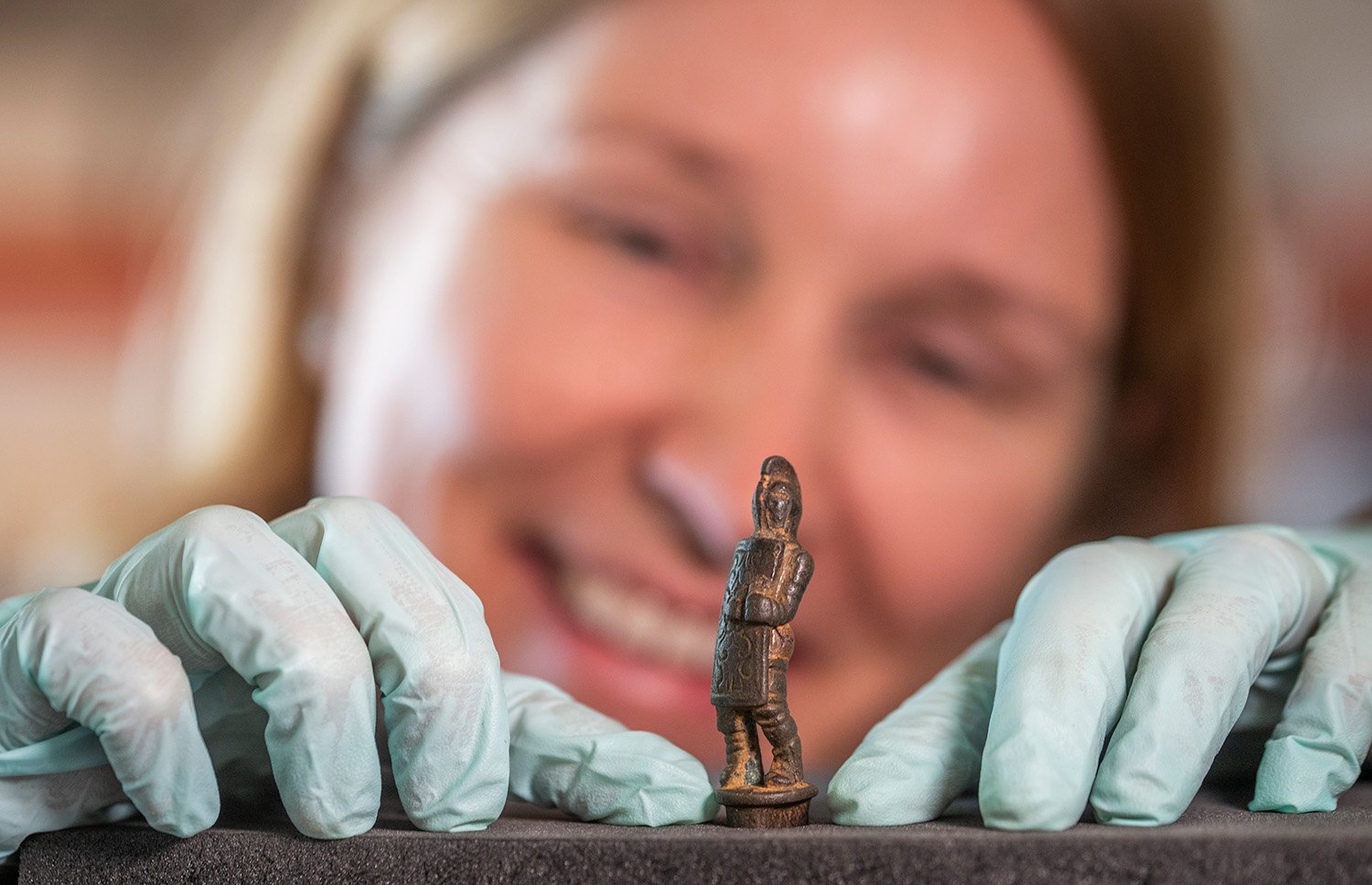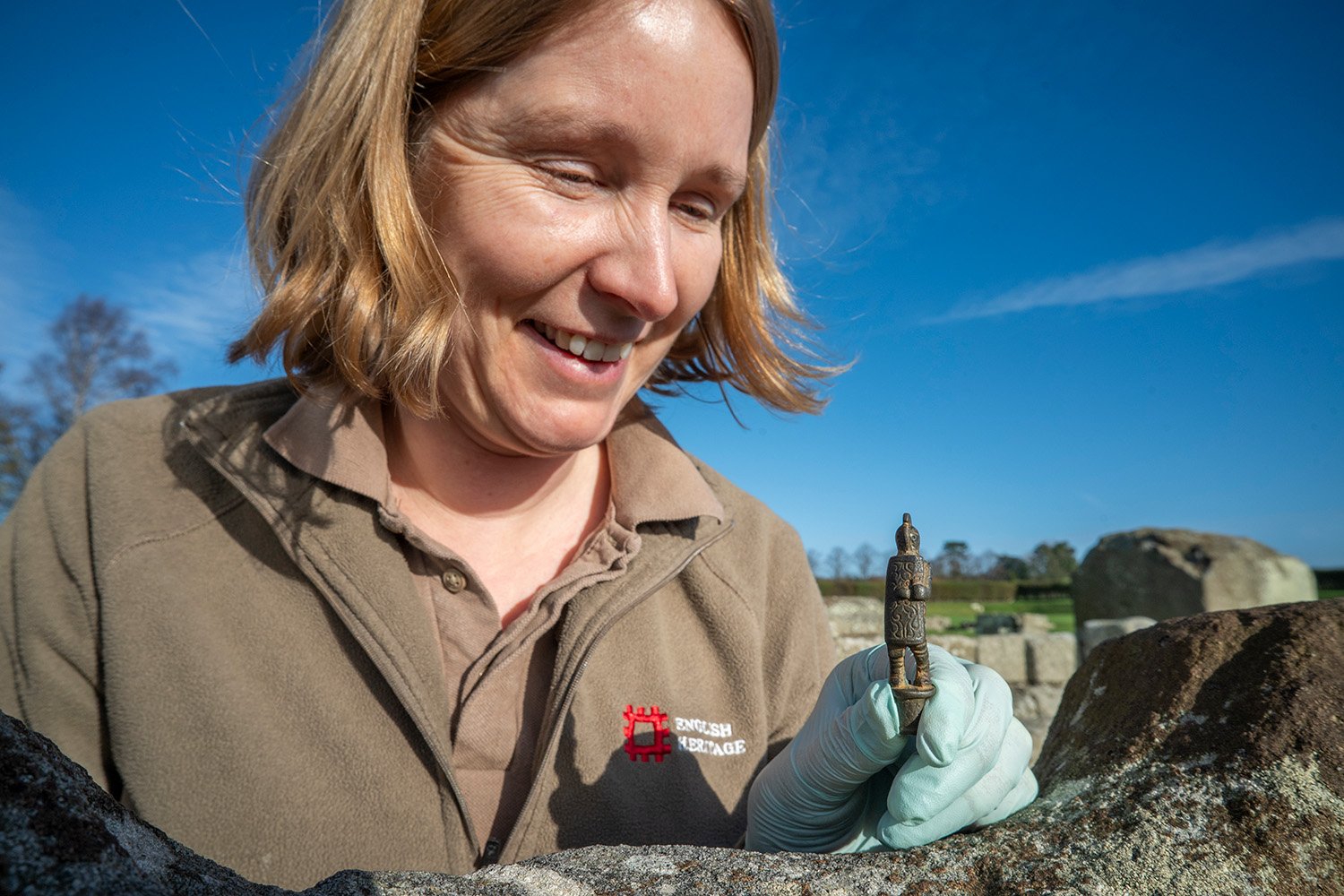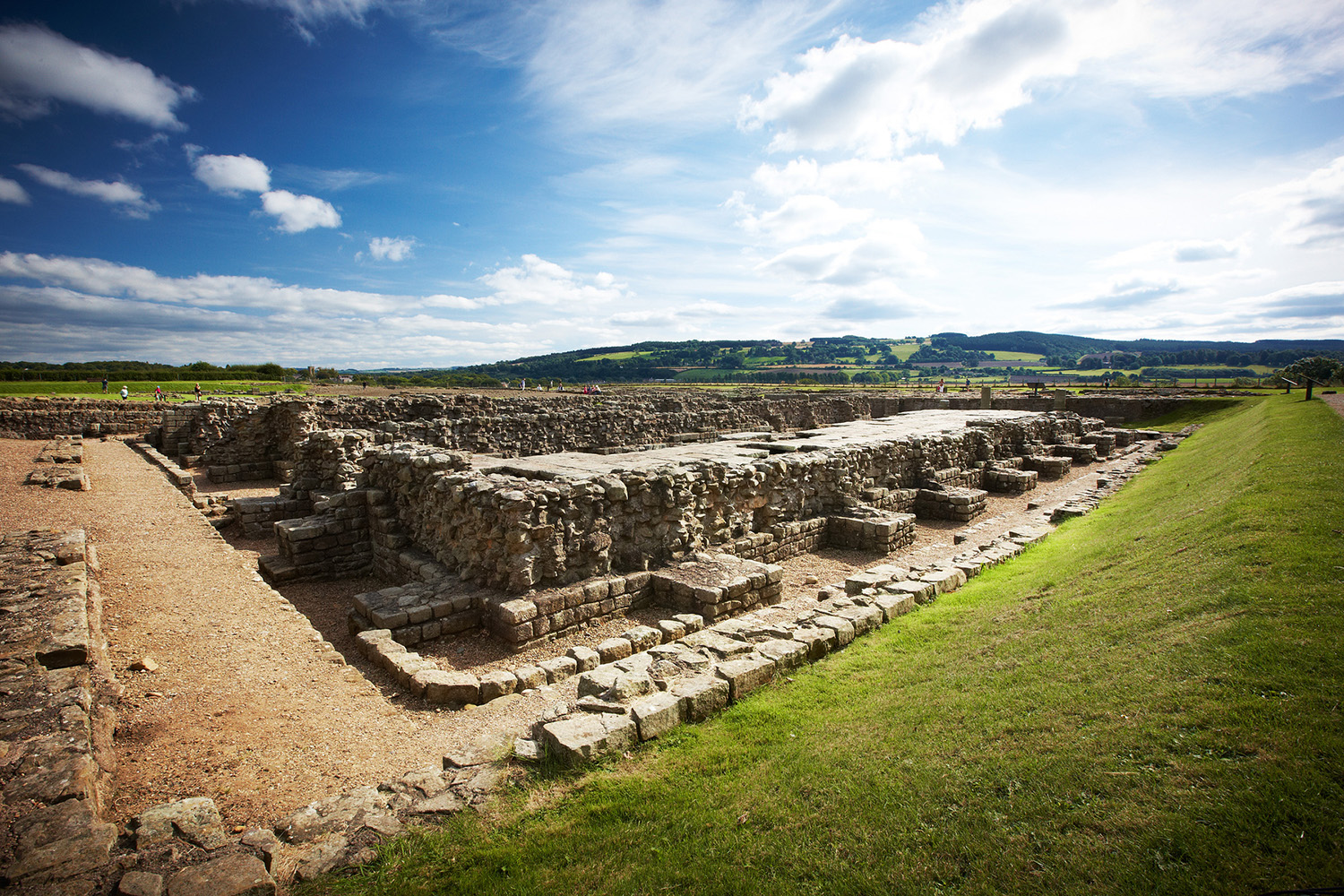15/11/2024
Rare Roman gladiator knife handle discovered at Hadrian's Wall
- We plan to display the 2,000-year-old souvenir, found in River Tyne at Corbridge
- The handle provides evidence that the gladiators' celebrity cult spread to the far edges of the Roman Empire
- Other items in our care depicting gladiators and animal hunts include pottery and glass vessels
A rare Roman knife handle cast in the shape of a gladiator has been discovered in a river at Corbridge Roman Town on Hadrian's Wall in Northumberland.
Depicting a gladiator with helmet and shield, and made of copper alloy, this knife is a remarkable example of a Roman gladiator souvenir, a rarity in Britain. It provides new proof that gladiators' celebrity status extended to the very edge of the Roman Empire.
The knife handle represents a secutor gladiator, a strong muscular fighter with heavy equipment including a large shield, sword and helmet. The secutor figurine is left-handed which would have been considered unlucky at the time. This suggests it is potentially a representation of a specific gladiator. Some gladiators were even taught to fight left-handed, perhaps to gain advantage over their opponents.

Dr Frances McIntosh, English Heritage's Collections Curator for Hadrian's Wall and the North East, said, 'It is rare to find a piece of gladiator memorabilia in Britain and to find such a well preserved and interesting piece is particularly remarkable.
'Despite being enslaved and socially outcast due to their profession, gladiators could become huge celebrities. Gladiators and the 'spectacles' were an integral part of Roman cultural life, taking place all across the Roman Empire. The phenomenon inspired the creation of sporting memorabilia, such as decorated ceramics and glass cups, lamps and figurines.
'Gladiators had sex appeal and there are cases of high-status Roman women falling 'in love' with these lowly fighters, despite the vast social difference. This beautifully made knife handle is a testament to how pervasive this celebrity culture was, reaching all the way to Hadrian's Wall at the very edge of the Roman Empire.
'Even now, almost 2,000 years later, the fascination around gladiators persists and has expanded even further into modern popular culture, as evidenced by the excitement surrounding the new Gladiator film sequel.'

Additional evidence of this fascination has been found in English Heritage's extensive national collection, including glassware and Samian pottery depicting gladiatorial combat.
One of the best examples is a Samian bowl found at Richborough Roman Fort and Amphitheatre in Kent, which shows various fight scenes including a victorious gladiator standing with arm and shield aloft, while his defeated opponent kneels before him.
The amphitheatre at Richborough, which served communities of new arrivals from the Roman Empire, had a cell for holding gladiators and wild animals ahead of battle.

The collection also includes glass vials, found at Wroxeter Roman City in Shropshire and Aldborough Roman Site in Yorkshire, of the kind that would have held perfume and saffron-infused water to sprinkle on spectators.
Additionally, a piece of glass with a leopard painted on it found at Corbridge was recently re-analysed through collections work, and is now thought to be part of a scene of an animal hunt, known as a venatio, which was a key part of a day at the games, alongside gladiatorial fights.
We plan to display the knife at Corbridge Roman Town in 2025, alongside other finds from the River Tyne.
- Read more about English Heritage's Roman sites here; or buy your own Roman souvenir here.